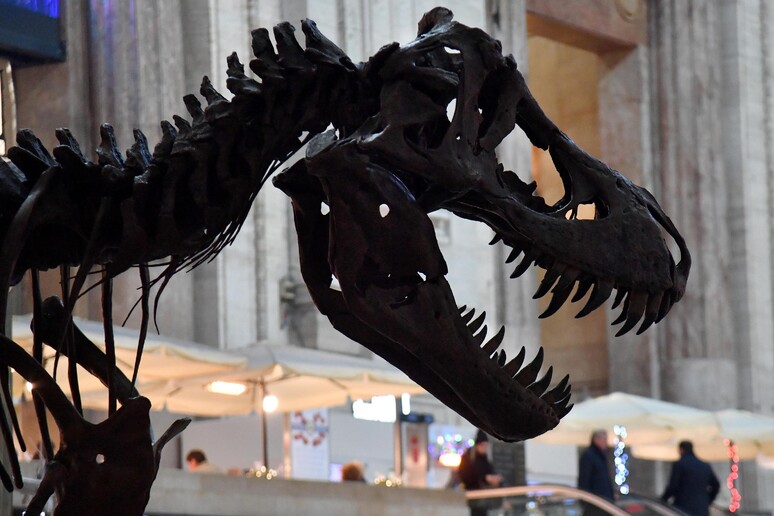The oldest large predator
dinosaur in the world was Italian, palaeontologists said
Wednesday.
The young ceratosaur that lived 200 million years ago, whose
scientific name is Saltriovenator zanellai, roamed the plains of
what is now Lombardy, they said.
Almost eight metres long and weighing in at around a tonne,
Saltriovenator had dagger-sharp teeth and steel-strong claws,
they said.
"He was a real war machine," said palaeontologists Cristiano
Dal Sasso, Simone Maganuco and Andrea Cau, presenting the find
at Milan's Palazzo Reale.
The predator is the first Italian dinosaur of the Jurassic
age and the only dinosaur found in Lombardy, the scientists
said.
Saltriovenator (meaning 'hunter from Saltrio', the place
where he was found) is a new species that backdates by 25
million years the appearance of the great predator dinosaurs,
the palaeontologists told reporters at the event.
This two-legged hunting and ambush specialist lived between
the tropical beaches and luxuriant forests that covered what was
today's western Lombardy, the scientists who discovered him told
reporters.
His ID, published in the journal PeerJ, reveals a young
exemplar of an impressive heft for the era, with an 80
centimetre skull equipped with razor-sharp teeth and anterior
limbs with four fingers, of which three powerful and clawed, the
article said.
Their anatomy suggests that today's birds' wings derive from
a fusion of the first three fingers of teropod dinosaurs,
scientists say.
It took more than 20 years to extract, assemble and interpret
the mysterious find from the famed Saltrio marble quarry about
50 miles north of Milan.
Now, with the investigation finally complete, the
palaeontologists said the fossils discovered in 1996 by an
amateur fossilist, Angelo Zanella, are from a new species of
dinosaur.
A new species warranted a new name. In "Saltriovenator
zanellai," "Saltrio" refers to the Italian municipality of
discovery, "venator" means hunter in Latin and "zanellai"
honours discoverer Zanella.
Saltriovenator is the first Jurassic dinosaur from Italy and
the most ancient predatory dinosaur of large size yet
discovered, said lead study author Dal Sasso of Milan's Natural
History Museum.
"Saltriovenator predates the massive meat-eating dinosaurs by
over 25 million years and sheds light on the evolution of the
three-fingered hand of birds," Dal Sasso said in a statement.
Extracting the find from the quarry - which, in 1778,
supplied marble slabs for the renowned La Scala Opera House -
required 1,800 hours of chemical preparation on more than 300
kilograms (661 pounds) of rock. The result: 132 bone pieces, a
dozen rib fragments and 35 bones.
Dal Sasso performed a painstaking and systematic analysis,
fragment by fragment, to recompose and position the bones. He
even went to the University of California Museum of Paleontology
in Berkeley and the National Museum of Natural History in
Washington to consult more complete dinosaur skeletons.
"Not all fragments match, but many are adjacent and allow us
to virtually reconstruct the shape of whole bones," Dal Sasso
said in the statement.
"To complete the puzzle we also used a 3-D printer: part of
the left scapula was turned into the right one thanks to a
'mirroring printing' which gave us a more complete scapula."
The final illustrations were made by combining more than 150
image files, he said.
Saltriovenator is set to be the "top-billed star of an
upcoming exhibition," the scientist said.
ALL RIGHTS RESERVED © Copyright ANSA











